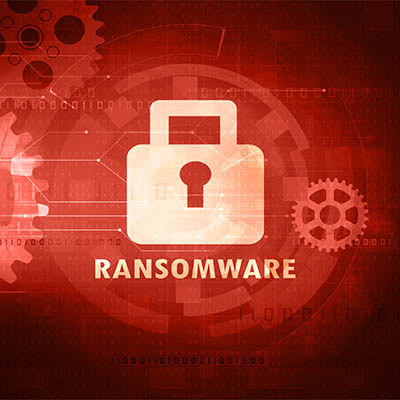
Ransomware is bad stuff, and it’s only gotten worse with its recent resurgence that aligned with the COVID-19 pandemic. Phishing attacks and other means by which ransomware is commonly spread have used the current atmosphere as a springboard. This makes it even more critical that these kinds of behaviors and attempts can be spotted and stopped.
Why Do Cybercriminals Use Ransomware?
It’s simple: if a cybercriminal specifically chooses ransomware as their malware of choice, they most likely intend to profit from their crime. The entire point of ransomware is to collect money from its victims by encrypting their data and demanding a ransom in exchange for the decryption key (which, for the record, isn’t guaranteed even if the ransom is paid).
Looking at it this way, it’s little wonder that cybercriminals have aimed their sights higher and higher.
Don’t get us wrong, small and medium-sized businesses are in no way out of the woods, but there have been more and more attacks on critical pieces of infrastructure taking place recently. Consider the attack that was waged on Colonial Pipeline and the massive supply chain disruptions that came about as a result of its impacts. Another massive issue in the supply chain happened in the food industry, with the REvil group attacking those infrastructures. REvil was also responsible for an attack on Kaseya, a major software vendor, hurting businesses and proving that service providers are a good target for such efforts.
Yes, You Need to Be Prepared to Deal With Ransomware
However, this can’t stop once you have some preventative measures in place. You won’t be fully prepared until your team is ready to deal with a successful attack, just in case one does slip through.
To do this, you need to have a resource in your corner that you can turn to for help with either an incoming attack or one that’s already gotten in. That’s what GeekBox IT is here for (amongst many other services). We can help you do more to keep ransomware out, while also putting you in a better position should one get by. Did you know that businesses can now actually insure themselves to help prepare for the high costs that come from a ransomware infection?
You’ll also need to crunch some numbers to evaluate your ransomware risk. How much of a financial impact could a ransomware attack have overall? Are there any risks that could come from any third parties? Could you be considered a valuable target for an attacker, in terms of the financial gain they could anticipate or the amount of disruption they could cause? Do you have anything potentially making you vulnerable to these attacks?
Once you’ve covered these steps (and committed to revisiting them regularly as your situation changes), you need to prepare for the two scenarios we’ve referenced:
Keeping Ransomware Out of Your Business
Naturally, we want to keep ransomware out, which means there are some things you need to do. Keeping your protections—your antivirus, your parameters for your content filters, your firewalls, and everything else of the sort—up to date can reduce the number of threats you need to actively deal with by a considerable amount. It is also important that you keep your team equally up-to-date with the best practices and accepted responses on the chance that they spot a potential threat.
Minimizing the Damage Ransomware Can Do
Should a ransomware attack make it past all that, you need to be prepared to minimize its potential impact on you. Frankly, you’ll likely have to completely wipe your infrastructure, so you need to have an isolated and maintained backup. You know, just in case.
Ransomware is no joke, but neither are the services that you receive by working with GeekBox IT. Our purpose is to do everything we can to prevent your business being hindered by a technology issue. Find out what we can do for your business specifically by calling (336) 790-1000 today.
